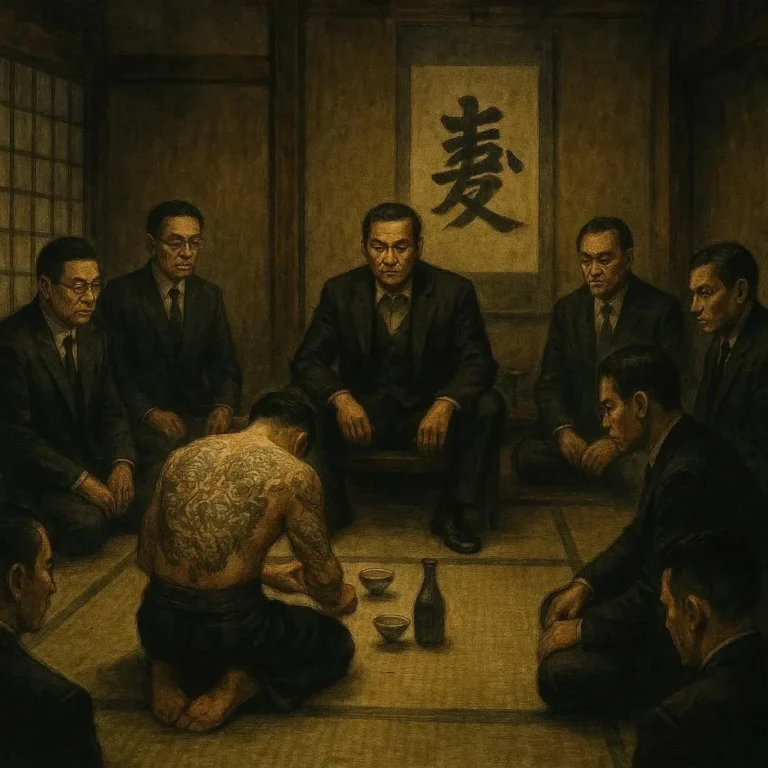509 views How Feudal Clans Built Japan’s Early Political System
For centuries, the image of Japan is one of mystique, tradition, and the decisive power of the feudal daimyo (landed lords). But beneath the lacquered surface of samurai tales and courtly elegance lies a complex tapestry of clan politics that shaped Japan’s formative governance structures. Understanding how feudal clans carved out a working political system provides crucial insight into the origins of central authority, regional autonomy, and the eventual rise of the Tokugawa shogunate that ruled from Edo for over 250 years.
1. From Yamato Polity to Clans: Early Shifts in Power
1.1. The Yamato Aristocracy
In the 3rd‑4th centuries, Yamato—the first recognizable Japanese state—was dominated by a unified court that wielded power through the kuni-ki, the early provincial registers. The central palace, located in Nara’s Heijo-kyo, operated under the guidance of kuni no miyatsuko (provincial governors) who were often local clan leaders.
1.2. Breaching Central Control
As Japan’s northern reaches witnessed increased agricultural productivity, clans began to compete for control over fertile lands and trade routes. By the 7th century, the Kamo clan, for example, secured powerful hydraulic projects, while the Taira (Heike) utilized rising irrigation to assert authority over the plains of central Japan.
By this time, the emperor’s reach was limited; regional warlords—predominantly the uchi clan (inner family)—started to vie for influence, creating the first pockets of feudal autonomy that would later crystallize into a system of daimyo governance.
2. The Rise of the Daimyo: Lords, Loyalty, and Land Control
2.1. Defining the Meiji‑Era Daimyo
Unlike the simple story of a single samurai who lived archaic codes, a daimyo was a powerful clan head who held tenō (land grants) and commanded a personal retinue of retainers. Their status spilled over into politics—a superior daimyo could muster armies, levy taxes, and even influence the shogun or emperor on a different level.
2.2. land, Production, and Legitimacy
Feudal clans focused heavily on maintaining agricultural surpluses. This surplus was the lifeblood of their political power: it provided the resources to pay soldiers and to keep war canals open during the mangō harvest period. The most dynamic clans — like the Chōsokabe or Sōma — built efficient crop‑storage systems to keep food supplies stable. Stability in food favored stability in politics, lending these families the legitimacy required for half‑yearly tōkyō appointments.
2.3. The Early Opositional Structure
Feudal clans formed cornerstone alliances across borders. When the Ōtomo of Kyūshū forged an uneasy partnership with the Mōri of Honshū, they simultaneously developed the first usably semi‑autonomous structure. This alliance created a “buffer zone” that repelled eager expansion from other daimyo, which eventually became a staple practice in ensuing hundred-year conflicts.
3. The Civil Wars: The Sengoku‑Era Polymacy
The Sengoku (or “Warring States”) period, roughly 1467 to 1603, stands as the most dramatic manifestation of the feudal clans’ influence. Political fragmentation intensified, leading to emperors in Kyoto sometimes languishing behind the so‑called “Gold Shogun”.
3.1. Daimyo Dominance vs. Central Bureaucracy
Following the Hōjō clan’s ascension, a new Sengoku shogun was selected. This shogun did not exercise unchallenged control and instead worked as a mediator between rival clans. The Ashikaga Tokugawa served as a figurehead whose central authority was largely symbolic. Meanwhile, the real decision‑making power resided with the warlords.
3.2. The Iron Code of Alliances
During this tumultuous era, the Sengoku‑era set a precedent of intricate alliances. The Takeda spearheaded a pact in alliance with the Akaishi clan balancing the Uesugi in the north. These alliances introduced a new strategy: longer‑term commitments synchronized with military resources.
3.3. Land Distribution in Wartime
Cultural innovations saw the introduction of “bandō” (military fortification manuals). For each clan, this meant that control over safe havens like Ishikawa and Akizuki dash pivoted on the retention of a compromised scenery, as the direction of war was more often determined by controlling iron‑plated iron mines than tactics on the field.
4. The Tokugawa Shogunate: Institutionalizing Feudal Hierarchies
4.1. Establishing a Central Order
When Tokugawa Ieyasu secured the Battle of Sekigahara in 1600, the political arena changed dramatically. The Tokugawa shogunate formalized the isolation of clans under a firm-line bakuhan system—combining a fixed han (domain) and daimyo autonomies.
4.2. Kokudaka: Land and Taxation
Every daimyo had to keep a kokudaka register: a precise record that quantified a domain’s rice yield and, by extension, its economic power. This metric regulated the number of soldiers a daimyo could field, thereby making the obligation to father financial support straightforward.
4.3. The System of “Sankin‑kōtai” Reforms
For the daimyo, Sankin‑kōtai mandated travel to Edo annually, forcing them to leave a family member (usually a spouse) under the shogun’s watch. This policy effectively paralyzed kinship‑based disputes and allowed Kyoto’s court to have an emphasis in imposing taxes. It is a direct demonstration that political loyalty could be managed by logistical means.
5. Everyday Governance: Protocol, Culture, and Social Harmony
To gain the overarching stability that Tokugawa built, daily life operated through protocol. The presence of a daimyo at a local village sign immediately conjured a sense of “seignorial duty.”
5.1. Wedding Alliances
Clans arranged matrimonial alliances not just for love but for political capital. Marrying into the Matsudaira clan gave a peer daimyo a stable line of succession and helped forge waves of cultural traditions like goryō influenced rice hoarding.
5.2. Religious Patronage
The daimyo usually became a patron for local temples. This patronage built a feedback loop: the temple’s perceived divinity gave the clan divine legitimacy, while the clan’s military strength protected religious infrastructure.
6. Decline and Modernization: From Feudalism to the Meiji State
When imperial forces revived the capital at Tokyo in 1866, the daimyo lost their power. New shogun were reduced to daimyō-designated managers. The Sino‑Japanese conflict revealed the *imperial’ modernity and fragmented the *daimyo*’s capacity to compete.
6.1. The “Heterointerference” of Western Siege
Western equipment forced daimyo to introduce modern weapons by strongly influencing political alliances. The Imperial Army supplied a new arms distribution system. These changes sent a stimulus for nation‑building sharply moving away from clan‑centric governance.
7. Legacy and Influence: Lessons Today
The concept of a decentralized federalism that still exists in the form of various prefectures owes a lot to the clanked division of authority that arose from clans. Traditional Japanese business classes—yaikō merchants—account for the structured hierarchy and later adopted corporate governance frameworks that character community. The daimyo layered bureaucracy foreshadowed the vertices of modern ministries showing how an assembly of clans could uphold a national consensus.
Key Takeaways
- Feudal clans weren’t merely separatist war leaders; they were architects of a political framework that balanced central authority with local autonomy.
- Agricultural surplus and land administration were the economic veins that logged political stability.
- Strategic alliances and coded conflict management (Sankin‑kōtai) laid groundwork for phased governance.
- The Tokugawa shogunate institutionalized these mechanisms—creating a political order that smoothly transitioned into the Meiji rights—illustrating the power of feudal roots.
- Modern Japanese polity, its divide‑between prefectures, and corporate governance ethos directly echo feudal clan traditions.
By stepping back 1500 years and viewing the influence that clans had over Japan’s early political design, scholars can trace how a system—underpinned by local autonomy, administrative discipline, and intricate alliances—driven by the unstoppable drive to maintain property and security, served as a cornerstone for the nation’s eventual emergence as a universal modern state.






